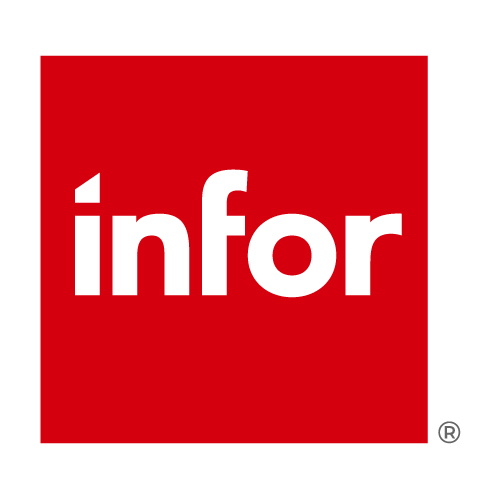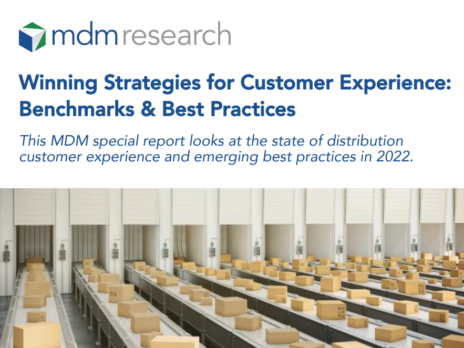
Over recent years, the concept of customer experience has evolved rapidly, and the deluge of digital tools and capabilities has granted customers more control over their consumer journey than ever before. From self-service tools to recommendations, opportunities for distributors to harness the powers of the cloud have multiplied. Integrated digital solutions have helped businesses to engage and retain customers while remaining adaptive and reactive to their evolving needs.

But a customer-centric approach is no longer just a competitive edge – it’s a necessity. From shifting consumer expectations to cost increases, providing effective and efficient customer experience is being hindered by a plethora of challenges. Increasing customer retention and loyalty is essential if distributors are to secure their future of business.
It comes without surprise, then, that McKinsey’s 2022 State of Customer Care Survey found that customer care is now a strategic focus for companies, as enhanced customer care has proved to increase sales revenues from 2% to 7%. If distributors are to keep hold of their customers, they must leverage the potential of digital self-service tools and hybrid digital-personal engagement, update service and operational metrics, and implement a strategic overhaul of processes, talent and technology. By embracing these elements, distributors can create a more engaging and satisfying B2B customer experience that sets them apart from the competition, while helping them to build a more robust business in a complex landscape.
Digital self-service tools for customer experience
While the state of sophistication for digital tools remains in its infancy in the distribution industry, the impacts of the pandemic have accelerated the application of digital tools for customers to use. Distributors are indeed beginning to integrate more technology into their processes in order to increase visibility into the trends and patterns of their customers. Through this process, they are able to collect and record data that can be analysed to shape a full profile of the customer, from which distributors can build and deliver a more personalised customer experience.
With customers now demanding convenience and instant access to information, they expect seamless self-service across all channels, and distributors must apply integrated solutions to offer relevant information across all digital channels, backed by the expertise of sales and service teams.
“Competing on pricing now is a nightmare. Manufacturers are questioning whether they even go to distributors when they can just go directly to the customer,” says Håkan Strömbeck, industry and solution strategy director at Infor. “To survive, distributors must leverage digital tools to provide profitable additional services. This will, however, require new elements, new processes and new ways of working.”
Robust self-service tools such as online portals, mobile apps and user-friendly websites provide customers with the ability to place orders, track shipments, access product information and manage accounts independently. By streamlining routine tasks, distributors free up their sales and support teams to focus on high-value interactions, ultimately enhancing customer satisfaction.
“Infor is implementing supplier portals where the suppliers could go directly to a distributor themselves. Distributors can also utilise a customer portal so that customers can have everything in the same chain from their original order until the issue, such as a return, is resolved,” says Strömbeck.
A changing sales approach
With sales through digital channels lowering selling costs for distributors, much of the legacy sales model such as core field and inside sales has been abandoned, in place of utilising more direct and remote digital channels.
However, few distributors are where they want to be in terms of digital support for their sales and customer service teams, and there is still a gap between where customers are and where distributors can meet them.
There has, however, been widespread awareness and investment to strengthen those capabilities and gradually narrow this gap. Getting close to customers is a strong competitive advantage distributors can achieve through leveraging digital tools, especially in e-commerce, as McKinsey projects mobile use to grow at 14% annually, more than double desktop growth of 6%.
“Distributors are perhaps not the frontiers in adopting new technology. They tend to use more traditional approaches, so I think there are still a lot of opportunities to become data-driven with customers,” says Strömbeck.
While digital self-service tools are valuable, maintaining a human touch remains crucial to a successful and engaged customer experience. Hybrid engagement combines automated interactions with personalised, human-driven support. Distributors can use AI-powered chatbots to handle routine inquiries while routing complex issues to skilled customer service representatives. This approach ensures swift responses while also nurturing genuine customer relationships.
”We have done some piloting such as utilising ChatGPT to compare two products that might be similar to each other, to minimise the need of bringing this kind of intelligence into our solution, by using what is available already,” says Strömbeck. “Can one trust GPT for everything? Most likely not. But at least it’s an indication – another way of infusing intelligence into the solutions.”
Utilising new data
Distributors have traditionally measured performance based on key metrics that are crucial to customers, such as fill rate, on-time delivery, order errors, back-order volume, and call centre responsiveness. But as customers increasingly engage through digital channels like websites, email, chat, and text, distributors are now expanding their metrics to monitor these interactions.
Distributors must measure new vital information if they are to build their abilities and deliver excellent customer service. Rethinking traditional operational metrics and incorporating customer-centric indicators, such as response time, issue resolution rates, and customer feedback, provides valuable insights into areas that need improvement or a specialised approach. These data-driven insights enable distributors to make informed decisions that directly impact customer satisfaction.
A culture of innovation
This data then needs to be incorporated into the existing systems. Redesigning processes to align with customer needs and market trends is critical, constantly engaging with feedback from customers to innovate and refocus or develop the customer journey or experience to improve it.
“There are loads of add-on services distributors can implement, but this requires an overhaul,” says Strömbeck. “You need better systems and to do manual data capture for this additional information. An effective ERP and collaboration will help to facilitate this.”
With that, cultivating a talented workforce that is able to adapt to these new technologies while remaining reactive to customer demands is essential. By investing in ongoing training and fostering a culture of innovation, distributors can consistently meet and exceed customer expectations, as employees can also feel empowered with the help of data to respond to customer needs.
Improving the end-to-end customer experience
Engagement requires consistent delivery of excellent customer service with a personalised touch. Distributors can add value to operations by offering post-purchase support, proactive communication, and personalised recommendations based on past interactions.
If distributors are to build a successful customer experience, they must seamlessly integrate digital self-service tools while utilising a hybrid approach to engage customers, utilise updated metrics and implement strategic redesign. By embracing these elements, distributors can streamline operations, empower customers and foster trusting relationships with customers that maximise their longevity and loyalty. In an increasingly competitive landscape, a commitment to continuous improvement and innovation is the key to success.








